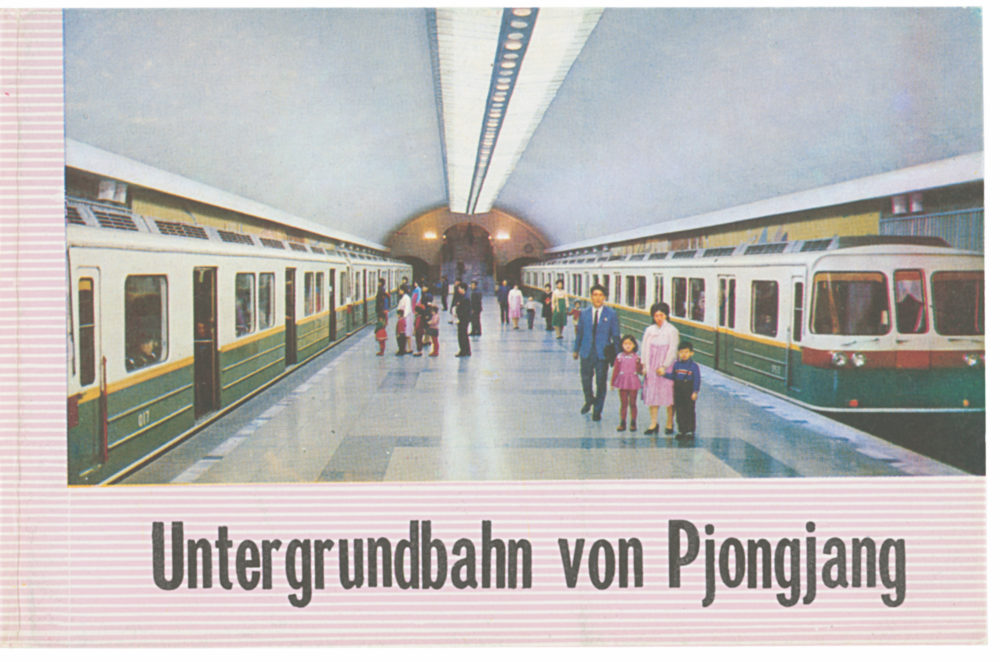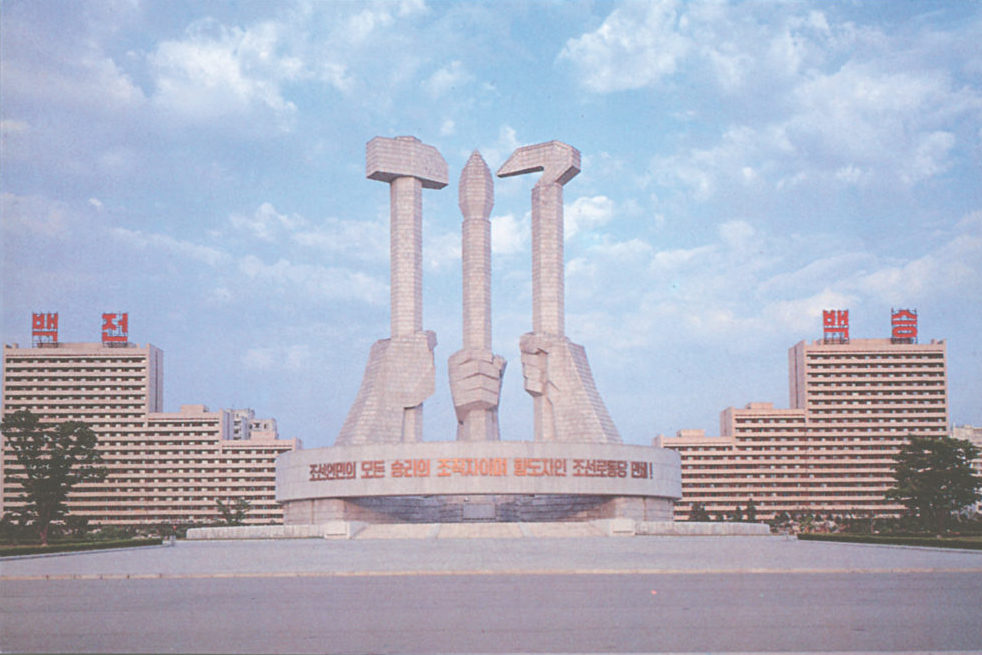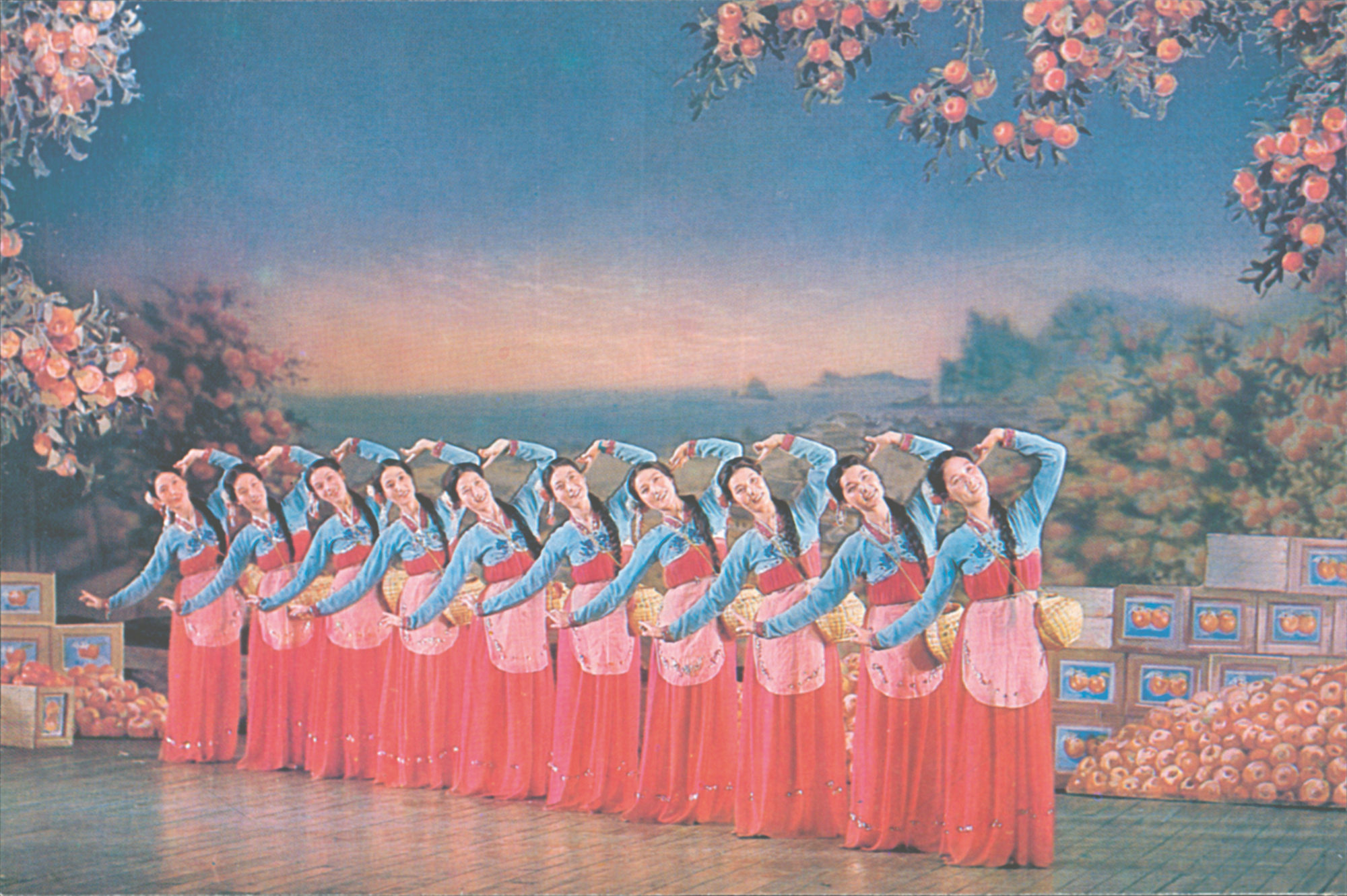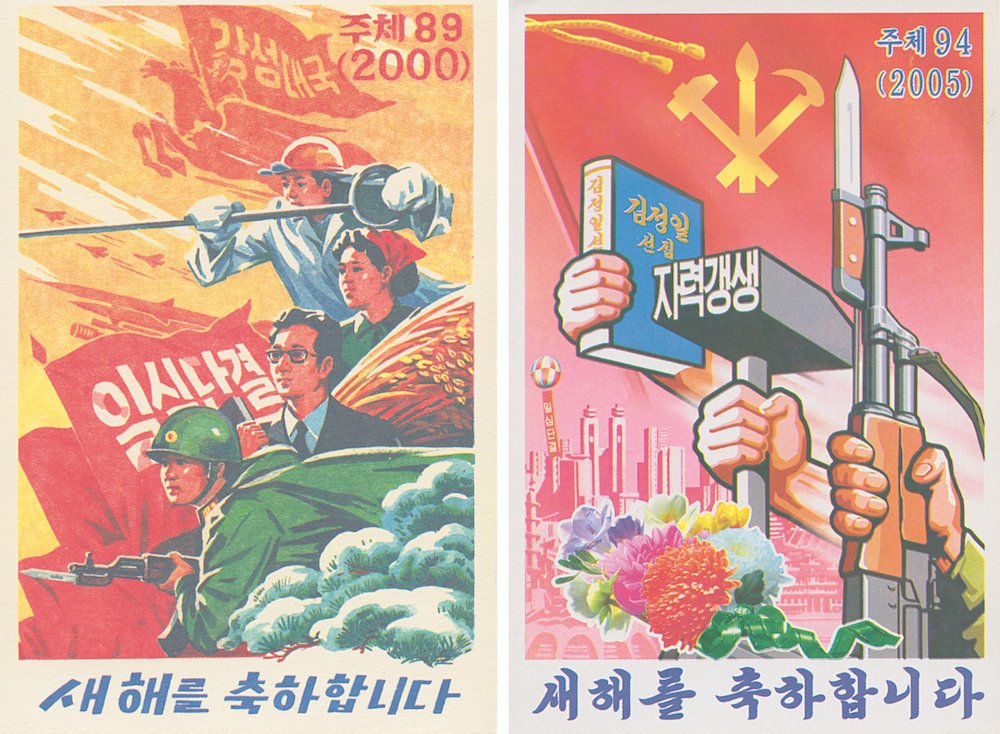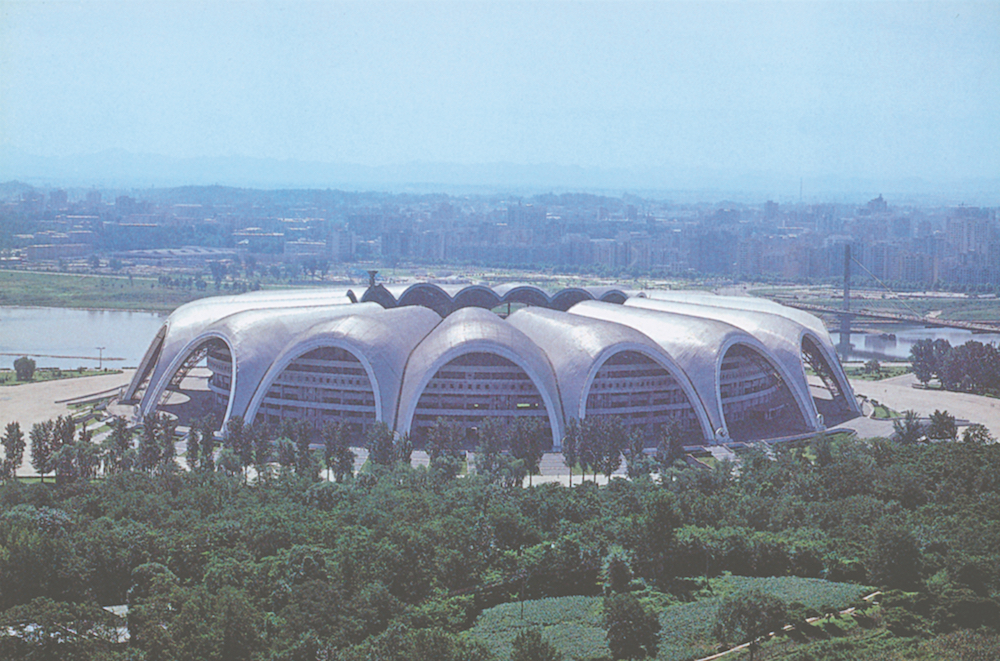Nicholas Bonner, author of Printed in North Korea: The Art of Everyday Life in the DPRK, discusses the surprising visual culture of North Korea’s lino-cut prints
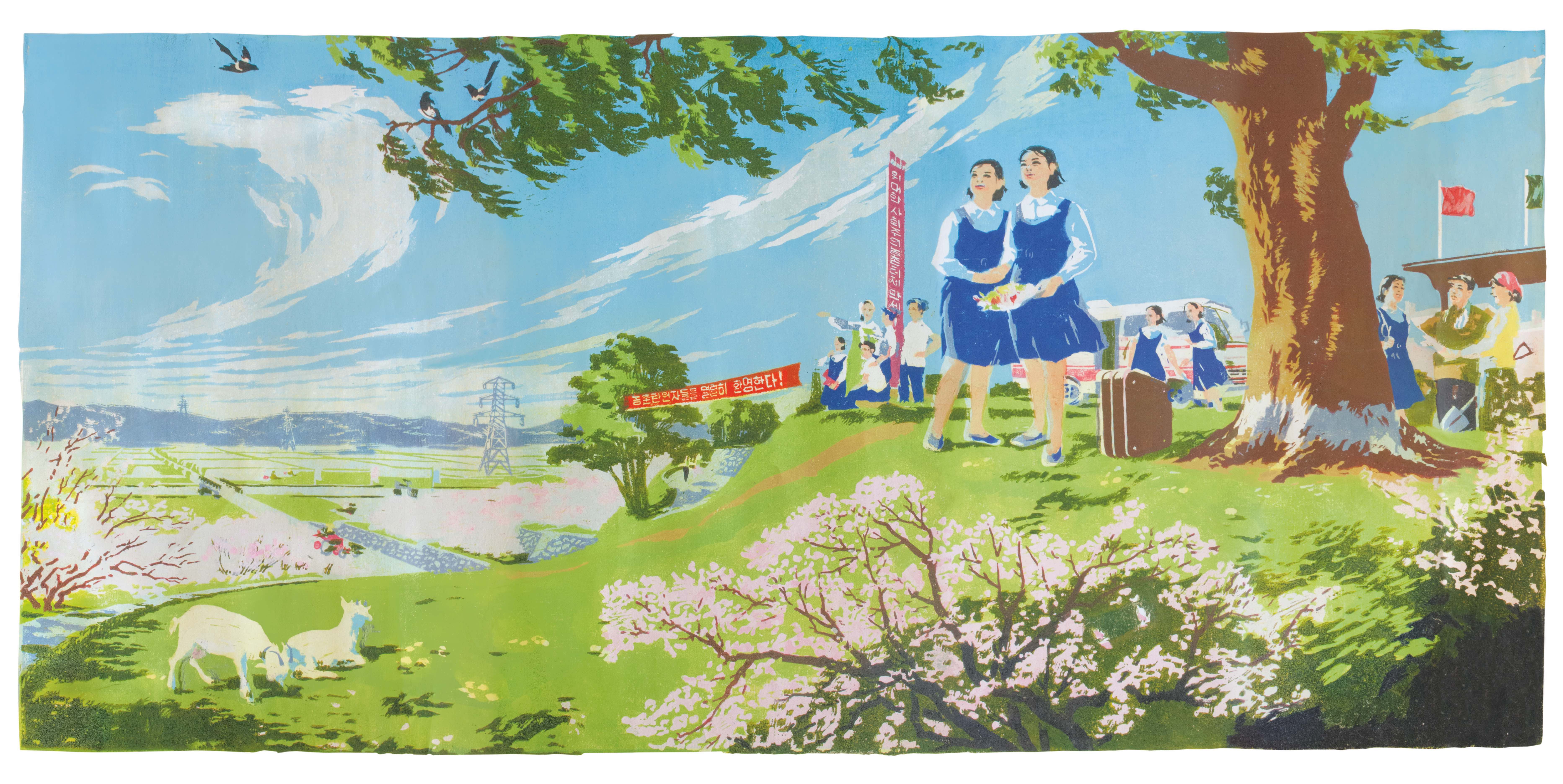
I started collecting North Korean artwork and graphics on my first visit to Pyongyang. The best artists belonged to either Mansudae or Paekho Art Studios and the prints from these studios became an important part of my collection, which now consists of over 700 prints dating from the 1950s to today. The subject matter ranges from the prosaic (a potato researcher in a laboratory, a woman cleaning a bus) to the poetic (the towering pine forests of the north, raging waterfalls and moonlit lakes). What they all have in common though, is the delivery of an unambiguous political or social message. Nonetheless, and as every print in this book testifies, the artistry, sensitivity and talent of artists in North Korea are evident in abundance.

Buying art in North Korea is not a problem, but buying good is certainly not straightforward. More than a few collectors have fallen for what appears to be a great work of art, not realising what they have purchased. As well as authentic works of art, there are also legitimate ‘copy works’ of popular pieces that are signed by the new artist while acknowledging the original. Forgery is seriously frowned upon in the DPRK, nonetheless I have seen works that are deliberate counterfeits. This is not helped by the lack of a recognised system of provenance and a lack of understanding of the history of North Korean art.
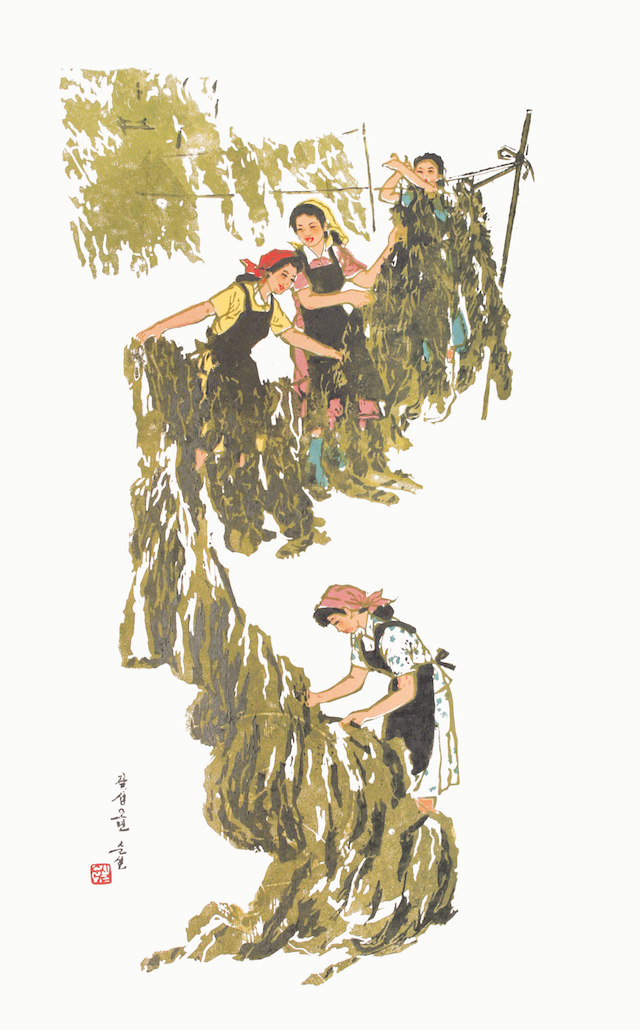
Older works from the 1950s tend to be woodcuts, but in the late 1970s linocuts printed with viscous inks came to the fore and are the most well-represented in this selection. Various styles can be seen in the following pages – from the reduction method (one colour applied and printed before re-cutting the lino and applying a second colour) – to applying various colours directly on to the linocut for specific areas. What is common is that no more than fifteen prints are made from each linocut, because after this the ink clogs up the cuts and the fine details are lost.

Art in North Korea ranges from the purely aesthetic to the politically laden. While simple decorative paintings and prints are produced for homes and restaurants, works for public display tend to be of the ‘Juche realism’ genre. The works are shown in exhibitions and printed in magazines with the aim of imbuing the public with a sense of pride and purpose: no matter how mundane your job, you are an important part of the revolution, the country therefore remains strong and will care for you. Many prints, especially those selected for the annual year book on the arts, are simply archived, but some make their way into the hands of foreign visitors browsing in one of the art studios.

Each print, including every one in this book, was made to be believable and to resonate with a Korean audience even if, in some cases, it is an exaggerated, almost technicolour, reality. I sincerely hope that this selection of prints will resonate with readers as works of great skill, and in their own way beauty, as an important reminder that North Korea is a three-dimensional country filled with people and places that go way beyond the headlines.

Printed in North Korea: The Art of Everyday Life in the DPRK by Nicholas Bonner is published by Phaidon, £24.95
